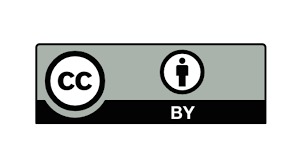Aplicación del Modelo Van Hiele para la enseñanza de la Geometría Analítica
Aplicación del Modelo Van Hiele para la enseñanza de la Geometría Analítica
Main Article Content
There is no doubt that the study of issues related to the intrinsic geometry has multiple difficulties, analysis and characterization which has been studied in many educationalsettings, finding that some specific difficulties associated with the language of geometry that are linked with reading and understanding of words. Our daily oral language has many basic geometric terms allows us to communicate and understand with greater precision observations about the world in which we live. That is why some students do not achieve the expected performance in the subject, so generating them and dropout issues academic. This research shows an aid to interpreting the evolution of geometric reasoning in students and what is the model for development of geometric reasoning developed by Van Hiele spouses. Whose main components are the “theory of levels of reasoning,” which explains how development occurs in the quality of geometric reasoning of students as they study geometry, and the “learning phase”, which is its didactic approach sequencing of the teaching and learning in the classroom, in order to facilitate the ascent of the students from one level to next higher reasoning. Of the findings highlight the idea that students entering the first semester of mathematics and computer science degree, he finds great difficulty in basic concepts of geometry which prevents the acquisition of new knowledge. It was found that the model can be applied to any topic of mathematical knowledge as it is flexible, ensuring students learn a valid form of geometric processes to yield significantly satisfactorily in Analytic Geometry
Downloads
Article Details
CROWLEY, M. L. (1987): "The van Hiele model of development of geometric thought". En N.T.C.M.: Learning and teaching geometry, K12. N.T.C.M., Resten,pp. 1-16. Disponible en: PDF The van Hiele model of development of geometric thought
HERSCOVICS, N. y KIERAN, C. (eds.): Proceedings of the 11 th International Conference of the PME Vol, 3. Los autores (eds). Montreal. pp. 131-137.
GUTIERREZ, A. y JAIME,A. (1987): “ Estudio de las características de los niveles de van Hiele”.
GUTIERREZ, A. y JAIME, A. (1989): “Bibliografía sobre el modelo geométrico de van Hiele”. Enseñanza de las Ciencias. vol nq 1, pp. 89-95.
GUTIERREZ, A. y JAIME, A. (1990): “Una propuesta de fundamentación para la enseñanza de la geometría: el modelo de van Hiele”.
JAIME, A.; GUTIÉRREZ, A. (1990). Una propuesta de fundamentación para la enseñanza de la geometría: el modelo de van hiele. (Alfar: Sevilla), 295-384.(JaiGut90.pdf)
LOBO, Netsy. Aplicación del modelo propuesto en la teoría de van hiele para la enseñanza de la geometría. La Universidad del Zulia. Núcleo Punto Fijo. Dirección electrónica: http://www.serbi.luz.edu.ve/scielo.php?script=sci_arttext&pid=S317-22552004001000004&Ing=es&nrm=iso https://www.redalyc.org/html/904/90440104/
HERNÁNDEZ, J. (1978): La enseñanza de las matemáticas modernas. Alianza Universidad. Madrid. HOFFER,A. (1983): “Van Hiele based reserach”.







